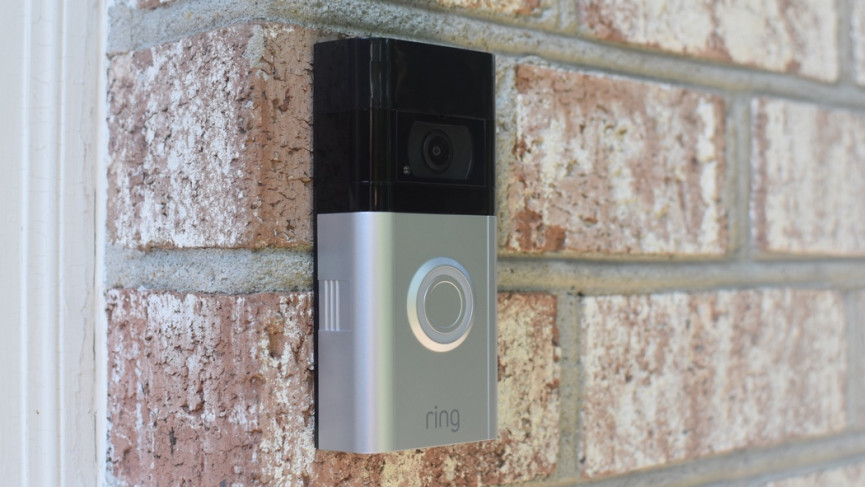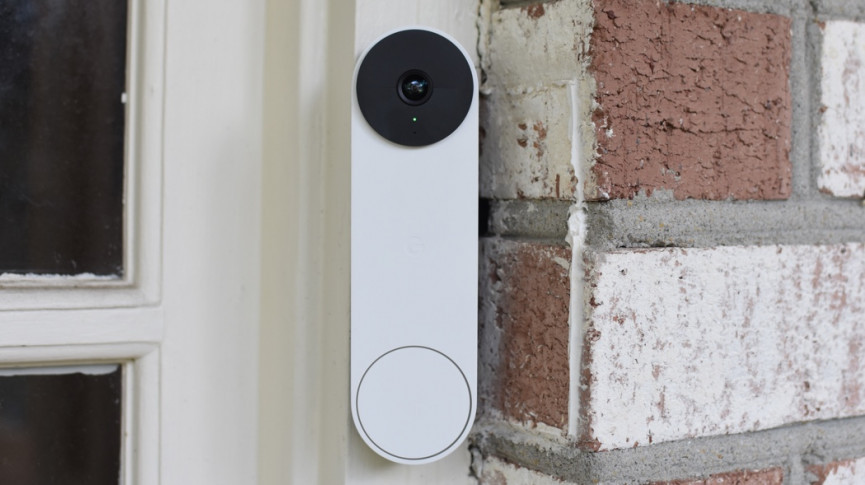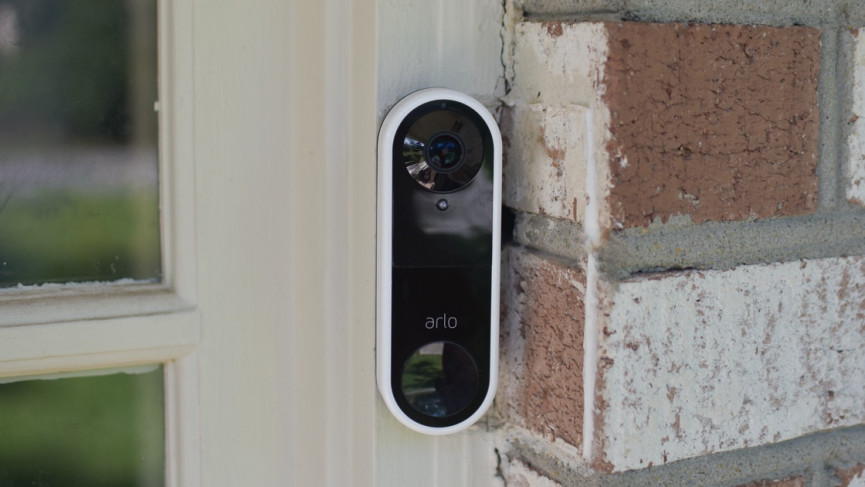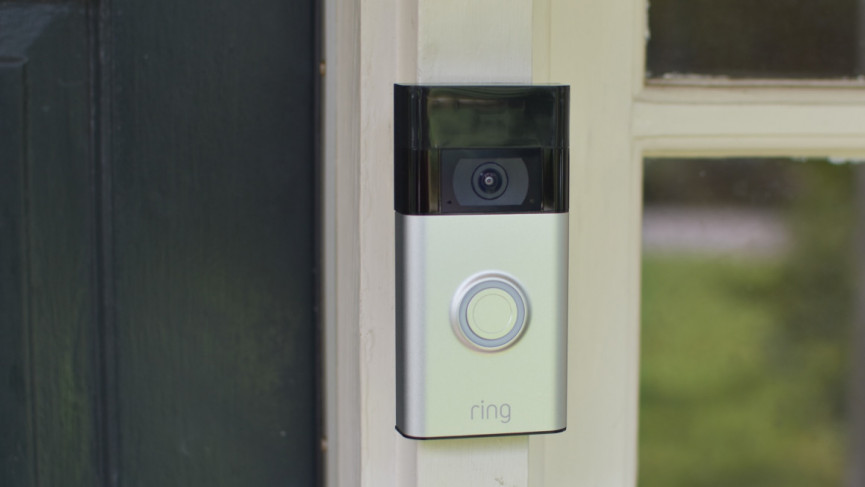The bells, whistles, and potential pitfalls of smart camera video doorbells
Buying a smart video doorbell camera answers one of the biggest questions of the smart home: if someone calls at your house and you’re not there to answer, did they call at all?
With a camera doorbell, they’re connected straight through to your smartphone or video device within the home. You can get a live video feed and see who’s calling, and use two-way audio to speak to them.
This can make dealing with deliveries a lot easier (“chuck it over the fence”, “put it in the garage”) and enables you to keep tabs on who’s calling. It’s also a lot more natural than just using a smart home camera.
Below, we’ll run you through our pick of the best video doorbells and we’ll then explore some of the things you need to know before buying your first smart doorbell.
The best video doorbells
There are now heaps of “smart” doorbells you can buy, but we’ve been busy testing – separating the heroes from the zeroes – to bring you this guide. Here are our top picks.

Best video doorbell for Alexa users: Ring Video Doorbell 4
Buy now: Amazon| £179
This isn’t actually the “best” Ring doorbell on paper – that honor belongs to the more premium Ring Video Doorbell Pro 2 – but, pound-for-pound this is our top pick from the Amazon-owned brand’s ever expanding range.
Building on its unique battery-powered pre-roll feature it debuted in the Ring 3 Plus, the latest doorbell from Ring captures an extra few seconds before the motion detector is triggered in full color.
This pre-roll feature goes a long way to solving the back-of-the-head problem most suffer from. That’s where they only catch the action as it’s walking away because they had to wake up first.
All of the Ring features we know and love are present and correct with the 4th-gen model. There’s Full HD 1080p live streaming, a 160-degree field of view, HDR video, night vision, motion detection, motion and privacy zones, and two-way audio.
You also get customizable motion zones, advanced motion detection, quick replies, plus some other smart notification features if you subscribe to the very reasonable Ring Protect plan.
Ring’s subscription plan, Ring Protect, is very affordable – $3 a month or $30 a year for 60 days of video storage on one camera or doorbell.
The Protect Plus Plan is $9.99 a month and gets you the same storage for an unlimited number of cameras and 24/7 professional monitoring if you have the Ring Alarm security system.
Of course, Ring works with Alexa, as both companies are owned by Amazon, and Alexa integration is excellent.
You can set any Echo speaker to act as an indoor chime for your doorbell, and any screen-based Echo display can automatically pull up a two-way audio/video call with your doorbell. You can also use your Fire TV to view doorbell footage.
If you don’t have the option to hardwire a video doorbell, Ring 4 is your best bet, but there are cheaper models out there if $200 is a bit steep for you.
What we love
- Great Alexa features
- Pre-roll feature
- Great value cloud storage plan
- Easy to install
What we don’t love
- No top to bottom view
- No Google Assistant or HomeKit
- No package detection
Check out our comprehensive Ring 4 review.

Best Google Home compatible doorbell: Google Nest Doorbell (Battery)
Buy now: store.google.com | £179.99
The new Nest Doorbell (Battery) from Google is a worthy successor to the excellent Nest Hello. But the Nest Hello (now renamed Nest Doorbell (Wired)) is expensive and only works with existing doorbell wiring.
This new offering from Google fills both those gaps by being £50 cheaper and it’s battery powered.
It also comes packing some upgraded smarts that are almost entirely processed on the doorbell. This makes for a very speedy, super-smart doorbell.
One great feature is Familiar Face detection. The first time your Google Nest speaker announces, “Your Mother-in-Law is at the front door,” giving you time to scarper – you’ll know it was worth the Nest Aware subscription you need for some of the more advanced functionality.
The Nest Doorbell’s IP54-rated frame houses a built-in rechargeable lithium-ion battery. A camera positioned up top captures HD video recorded in 960 x 1280 pixels, up to 30 FPS with a 1/3 inch 1.3MP sensor and a 6x digital zoom.
The aspect ratio is an intriguing 3:4, which captures pretty much everything you’d want to see – both top to bottom and side-to-side. Aided by a 145-degree diagonal field of view, we could see our entire porch, including everywhere the delivery guys contrive to hide my packages.
At the bottom of the buzzer is a very large, round button with a white LED ring that glows softly at you as you approach (thanks to a PIR sensor) a gentle invitation to “press me.” It also glows green when the camera is recording or being viewed live.
Another neat feature is a battery saver option that will automatically switch to record only when the doorbell is pressed if your buzzer is on its last dregs of battery (7 days or less). After all, the last thing you want is a dead doorbell, that’s what regular doorbells are for.
Designed to work off battery, you can wire it to doorbell wiring to trickle charge it (there’s also a plug-in accessory available) with the main benefit being that it can activate your existing electronic chime, and you won’t have to take it down to charge it (the battery is not removable).
You can hook into any Google Nest speakers to announce when someone is at the door and use a Google Nest smart display to see and talk to your visitor.
Unfortunately, it doesn’t work with the Nest app. Instead, you have to contend with the mess that is the Google Home app. There’s also no interoperability at launch, so Alexa and SmartThings users should stick with the still-compatible Hello.
What we love
- No charge for smart alerts
- Familiar Faces feature
- Fast to load
- Works well with Google Assistant
What we don’t love
- No love for HomeKit, SmartThings or Alexa
- Have to remove to charge
- It’s very big
Have a read of our Google Nest Doorbell review to learn more.

Best security ecosystem: Arlo Video Doorbell
Buy now: Amazon, arlo.com | £179
Arlo is pretty late to the doorbell party, having only launched its first model in 2020. However, the Arlo Video Doorbell is worth considering given that the company’s excellent range of cameras make for a powerful smart home security system, and the Arlo Doorbell fits neatly into that ecosystem.
It boasts an impressive 1536 x 1536 resolution, 180-degree diagonal field of view, and a 1:1 square aspect ratio, which works so well for capturing what’s happening on your doorstep.
Unlike the company’s cameras the Arlo Doorbell doesn’t require the hub, so you don’t need to be part of the Arlo club, nor pay for extra hardware. However, you will need to buy a chime if you want to hear your doorbell in the house.
You will need existing wires, however. Like most systems, with the exception of Ring, the Arlo Video Doorbell doesn’t use a battery.
Arlo’s cameras are big on smart features, so captured video will automatically spot packages, animals, cars or people. It doesn’t use facial recognition, so it won’t be able to tell you who called, but it can help you filter out motion alerts that aren’t of interest.
You’ll need a subscription to have footage saved for playback, and £3 gets you 30 days of storage (but this jumps to £10 if you have Arlo cameras as well.
Footage was great quality in our review testing, during the day and night, but we did think audio quality lagged rivals.
Be aware that a battery powered Alro video doorbell is also available.
What we love
- People, animal, vehicle alerts
- Square view shows more doorstep
- Works with Alexa, Google
- Geofencing
What we don’t love
- Some audio issues
- No 24/7 recording option
- Wired only
- No on-board storage
- Plug-in Chime costs extra
Check out our full Arlo Doorbell review.

Best budget option: Ring Video Doorbell (2nd-gen)
Buy now: Amazon | £89
The smart doorbell that kick started the connected front door revolution has been revamped. The second generation Ring Video Doorbell boasts a budget price-tag and some pretty impressive specs.
It takes the original Ring Video Doorbell and adds Full HD 1080p video, improved motion detection, privacy zones, audio privacy and crisper night vision.
You’ll still have to take the whole doorbell unit off of the wall when it needs charging; although there’s a £39 solar base where you can mount the Doorbell on, which charges it.
The key job of a video doorbell is to send a quick alert when someone approaches your door or presses your doorbell. The Ring delivers well here, the alert came almost instantly and the video feed took about 6 to 8 seconds to show up on our phone and the Echo Show 8 we tested it with.
While the video quality is 1080p, the same as all the other Ring doorbells, it’s definitely not as bright or crisp. But it’s fine for general viewing, and the zoom is okay.
If you have wires all in place and you’re looking for an even cheaper Ring doorbell then take a look at the recently launched Ring Wired Video Doorbell.
What we love
- 1080p HD live streaming
- Works really well with Alexa
- Much better motion detection
What we don’t love
- No Google Assistant or HomeKit
- Need to remove to charge
- No 24/7 video recording
Read our Ring Video Doorbell (2nd-gen) review.

HomeKit Secure Video pick: Logitech Circle View Doorbell
Buy now: logitech.com| £269.99
The Logitech Circle View Doorbell is one of the best smart doorbells that we’ve tested, thanks to speedy notifications, zero lag time, high-quality audio and video, and excellent smart alerts.
However, it does come with a big caveat: it’s a HomeKit Secure Video camera, relying on a HomeKit hub to do all the heavy lifting.
If you’re all in with Apple’s smart home ecosystem then this could well be the doorbell for you.
Alerts for a ring, motion or activity come in almost instantaneously and there is no lag time when pulling up a live view. There is no delay in streaming, so no “back of the head” problem (when the video just catches the back of the visitors head as they walk away).
With HKSV the Logitech is always recording and analyzing motion, so when it detects something there’s no time spent waking up or sending footage to the cloud for analysis.
Color night vision is very good thanks to the 4000K LED strip that illuminates your visitor brilliantly, although at the expense of their eye balls.
What we love
- HomeKit Secure Video
- Clear HDR video
- Color night vision
What we don’t love
- No Google Assistant or Alexa
- Facial recognition spotty
- Expensive
Read our Logitech Circle View Doorbell review.

HomeKit compatible: Netatmo Smart Video Doorbell
Buy now: netatmo.com| £269.99
The Netatmo is a wired doorbell offering, that is compatible with most electrical installations, from 8-24 volts up to 230 volts.
When it was first announced – almost 2 years ago now – the Netatmo Smart Video Doorbell had the honor of being the first HomeKit compatible doorbell but in the many months that have passed, the likes of the Yobi Video B3, the Robin ProLine and the Logitech Circle View Doorbell have gone live; the latter boasting full HomeKit Secure Video features, as well (which, Netatmo assures us, is incoming for its doorbell soon, too).
Netatmo’s video doorbell can be controlled via the Home app or using Siri – you can ask Apple’s assistant to show you who’s at your door.
You’ll be able to see a live video feed on your phone if someone comes ringing, while the doorbell will send you an alert if it detects people loitering around your home.
Thanks to the built-in microSD card slot, no ongoing subscription fees; which may do something to alleviate the high purchase cost.
What we love
- HomeKit friendly
- Subscription free
- Great design
What we don’t love
- No Google Assistant or Alexa
- Needs wiring
- No HomeKit Secure Video (yet)
Read our Netatmo Smart Video Doorbell review.

Best with no subscription: Eufy Video Doorbell 2K
Buy now: Amazon, eufylife.com | £135
Eufy offers a great balance between excellent value for money and exceptional performance, and it does it all without any monthly cloud storage fees – as it stores your video locally.
We love the responsiveness of this doorbell – there’s no waiting for endless buffering, and the video quality is excellent, serving up 2K (2560 x 1920) resolution with HDR technology for clearer images, and offers a 160-degree field of view and 4:3 aspect ratio – totally comparable to Nest’s Hello.
Person detection means you can choose not to be bombarded with notifications when trees sway in the wind or a cat or car crosses by your front door, and quick responses let the doorbell do the talking for you, you can even create custom ones.
It’s slightly more expensive than our Budget Pick, the Remo S Bell, but it comes with an indoor Chime (you have to buy one separately for the Remo), and its performance is better – especially on the software side. Notifications are super speedy and the app is polished and very user-friendly.
The downsides? No decent smart home integration beyond basic Alexa and Google Assistant integration (you can view your doorbell feed from their screen-enabled devices and Alexa can act as your indoor chime). There’s also none of the high-end features such as face recognition or being able to trigger other cameras around your home, and no integration with smart door locks.
What we love
- Free, local video storage
- Indoor chime included
- Super quick alerts
- Excellent video quality
What we don’t love
- No smart doorlock integration
- No continual video recording
- No HomeKit
- 2.4GHz Wi-Fi only
Read our full Eufy Doorbell review.
Video doorbells: Things to consider
If you’re sold on the idea of a smart doorbell and are now looking at the cold reality, there are a few key considerations.
Wired vs wireless
The first is how the doorbell is connected. If you’re replacing a doorbell on the front of the house, which is wired in, you’re already winning as you can make use of the existing doorbell wiring.
Most video doorbells are designed to support this system, and you can wire them in using these connectors, and ignore the need for batteries forever.
Read this: A beginner’s guide to smart home wiring
If you don’t have a wired set up, you’re going to be limited. You can either wire in a doorbell, which is less than ideal: chasing home electrics back to a junction box, installing a transformer to step down the power, finding somewhere to chase the wire and then drill through your doorframe. Or you can buy a battery-powered version.
Brands such as August, Ring, Arlo and Eufy all now have battery powered video doorbells on sale.
There is also the option of Power over Ethernet (PoE). These doorbells, Ring has the Elite for example, are powered by an Ethernet cable that goes directly to your router; an Ethernet cable that also transmits the data and, as such, makes for a more reliable connection.
Storage costs
The next consideration is cloud storage and accessing recorded motion and rings. While answering a ring at your doorbell is part and parcel of the smart doorbell experience, watching video back of missed calls or detected motion usually (but not always) comes at a price.
This can cost in excess of £25 per year, and is an ongoing cost for having a doorbell, not something that everyone wants to enter into.
Smart lock integrations
Increasingly, smart doorbells aren’t just being used to screen callers, but to let the person in. That could be a cleaner, dog-walker or tradesperson – but this requires the doorbell to work together with your door.
For example, Nest’s Hello doorbell plays nice with the Nest x Yale smart lock, and the companion app will let you both see who’s at your door and unlock it simply.
As for Ring, it now has integration with Z-wave locks from Schlage, Kwikset, Yale, and others, which means that you can now unlock your door from the Ring app if you have the two paired.
What about HomeKit?
HomeKit has been painfully slow to feature on any smart doorbell. Robin, Yobi and Netatmo are, so far, the only brands offering HomeKit compatible video doorbells.
However, with the arrival of HomeKit Secure Video we hope this will soon change, as there’s an incentive for both Apple and smart home companies to make it work.


